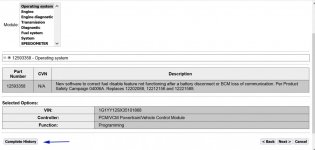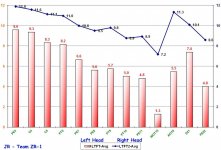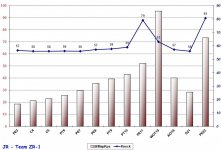I doubt any seller would go into the depth to know how solid the vehicle is and if in future needing smog testing if it would pass or not, nor cares if engine is functioning for best performance
Not trying to scare you but to learn enough to ask the questions of the seller before you make up your mind in spending the money
But I see bad design and tuning many times when mods are done for so-called performance gains and end up people coming to me to clean the mess-up
One example, so you understand what happens with long tube headers and today's engines that have lots of feed-back sensors reporting to the PCM (Powertrain Control Module)
Here I selected a 2008 base C6 that had headers installed and not tuning or bad tuning was done and failed I/M smog tests
The front O2s are the BIG boss, what it reports to the PCM dictates how it will command in part the fuel trims
Many times the bung (welded to exhaust pipe and O2s screw in) that one was mounted further downstream than the other
GM labels (Bank 1, left head, Bank 2 right head)
PCM is adjusting how long the fuel injectors are being commanded ON and does so by math the PCM is doing as what front O2s report (these are upstream of the CATs)
PCM keeps running tables and adjusts as to Short term (as that instant) and Long term which is over a period of time
Let's just stick with the Long-term fuel trims (LTFT) B1 and S1
The raw data inside the PCM I collect while owner is driving the C6 and I then can analyze that data
The engine is broken up into 23 different engine conditions, which we call "fuel cells"
This would be like cold, hot starts, A/C on or off, at idle, part throttle, decel (lifting off gas pedal) WOT,etc
Cannot treat them the same as to timing, fuel, torque, airmass, etc
So lets how this C6 with LT headers was doing
In perfect world of LTFTs the number would be ZERO, meaning not lean, not rich
Positive values mean lean, the larger the value is the leaner it is
Negative values mean rich, so a -10 would be 10% too rich
Here we see the fuel trims, far left is almost no engine load and as going to the right is more and more load, torque, etc
As you see the LTFTB2 is way leaner then LTFTB1, so there is an imbalance left to right heads
Those fuel trims should have been way closer to zero and balanced B1/B2
As it is you see how lean this engine is running and that kills performance as it does further below this chart
View attachment 13971
Being that lean causing engine knock, which the PCM reacts to be yanking up to 15 degrees of timing,
It then has a latency, and time it takes for knock to decay and then PCM commanding higher timing, so every knock this
game goes on
Here is the knock counts during this testrun :
Lot of knock and worse when getting into higher engine load
View attachment 13972
So in the end my ONLY point is ASK the seller the questions and almost due to cost of buying Corvettes the best case is one that is local so
you or some smart guy with a OBD-II scanner can tell within a few mins if this is a buy, or it will be a money burner
The only dumb question is the one people do not ask
Lastly due to long tune header move all downstream, many times then the wiring for the 2 downstream O2s are too short and some wise
guy cheats and shitcans the rear ones and in tunes hides that by turning off the DTC for the S2 O2s (after the CATs)
Being I am a two finger typer ........................
Class dismissed




